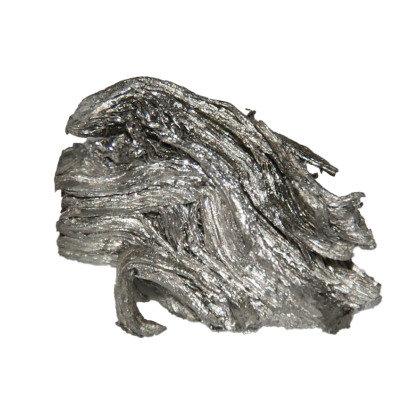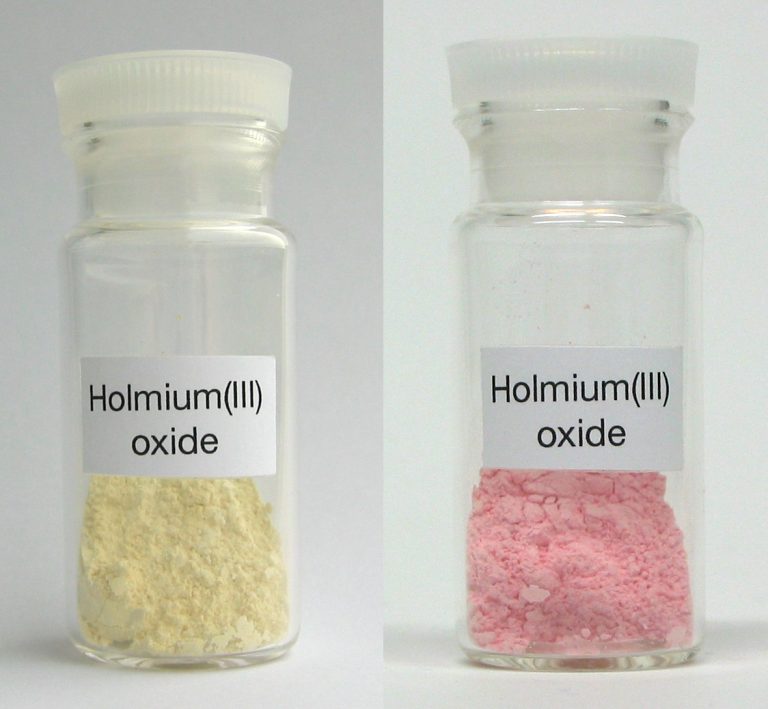Ho • Atomic Number 67

Holmium
Holmium is a gray, soft, and ductile metal that is relatively corrosion-resistant. Its most outstanding property is that the holmium(III) ion (Ho³⁺) has the highest magnetic moment of all naturally occurring elements. It belongs to the heavy rare earth elements.
Its main application is in magnetic technologies, where it plays an important role as a performance enhancer in permanent magnets.
In 1878, Swiss chemists Marc Delafontaine and Jacques-Louis Soret discovered the element spectroscopically through its unique absorption lines and initially named it "X." In 1879, Swedish chemist Per Teodor Cleve independently discovered the element and isolated it as a yellow oxide from impure erbium (erbium oxide). Cleve used a method developed by Carl Gustav Mosander: he first removed all known impurities before attempting to separate the remainder. This resulted in a brown residue, which he named Holmia, and a green residue, called Thulia. It was not until 1911 that Swedish chemist Holmberg succeeded in producing pure holmium oxide. Whether he adopted the name Holmium, proposed by Cleve after the Swedish capital Stockholm, or derived it from his own name is unknown.
Metallic pure holmium was first produced in 1940. Naturally, holmium only occurs in compounds.

Rare Earth Elements
Holmium (Ho) is another heavy rare earth element (HREE) and one of the least abundant elements. Holmium-containing minerals include xenotime, fergusonite, gadolinite, and ion adsorption clays.
Economically significant deposits are ion adsorption clay deposits found in southern China (Jiangxi and Guangdong provinces) and Myanmar.
After a complex separation of other accompanying elements, the oxide is converted to holmium fluoride using hydrofluoric acid. It is then reduced to metallic holmium with calcium, forming calcium fluoride as a byproduct. Remaining calcium residues and impurities are removed through an additional vacuum remelting process.
The most important use of holmium is as a magnetic pole piece in (solid-state) magnets. Holmium is not used as a standalone magnet but as an additive in high-performance neodymium-iron-boron (NdFeB) permanent magnets. The addition of holmium (often together with dysprosium) enables these magnets to retain their magnetic strength (coercivity) even at very high temperatures. Without these additives, the magnets would become demagnetized when exposed to heat.
These super-stable, heat-resistant magnets are absolutely essential for electric motors in hybrid and electric vehicles, as well as for generators in wind turbines.
Holmium also finds applications in control rods for nuclear reactors and in medical lasers (holmium-doped yttrium-aluminum-garnet lasers – Ho:YAG lasers).
| General Information | |
| Name, Symbol, Atomic Number | Holmium, Ho, 67 |
| Series | Lanthanoid |
| Groupe, Periode, Block | La, 6, f |
| Appearance | silvery-white |
| CAS-Number | 7440-60-0 |
| Mass Fraction in the Earth's Crust | 1.1 ppm |
| Atomic Properties | |
| Atomic Mass | 164.93032 u |
| Atomic Radius | 175 pm |
| Covalent Radius | 192 pm |
| Electron Configuration | [Xe] 4f¹¹ 6s² |
| 1. Ionization Energy | 581.0 kJ/moll |
| 2. Ionization Energy | 1170 kJ/mol |
| 3. Ionization Energy | 2204 kJ/mol |
| 4. Ionization Energy | - |
| Physical Properties | |
| State of Matter | solid |
| Crystal Structure | Hexagonal |
| Density | 8.78 g/cm³ (at 25 °C) |
| Magnetism |
Paramagnetic (χm = 0.049) |
| Melting Point | 1734 K (1431 °C) |
| Boiling Point | 2993 K (2720 °C) |
| Molar Volume | 18.74 * 10⁻⁶ m³/mol |
| Heat of Vaporization | 265 kJ/mol |
| Heat of Fusion | 17.0 kJ/mol |
| Electrical Conductivity | 1.23 * 10⁶ A/(V·m) |
| Thermal Conductivity | 16 W/(m*K) |
The silver-white shining rare earth metal holmium is soft and malleable.
Holmium exhibits remarkable magnetic properties. In terms of its ferromagnetic behavior, it surpasses iron by far. With a magnetic moment of 10.6 μB, it has the highest magnetic moment of any naturally occurring chemical element. It forms magnetic compounds with yttrium.
In its compounds, holmium predominantly occurs in the +3 oxidation state; Ho³⁺ cations form yellow solutions in water. Under special reducing conditions, the +2 oxidation state can also be realized in chlorides, for example in holmium(II,III) chloride (Ho₅Cl₁₁), although pure holmium(II) chloride does not exist.


